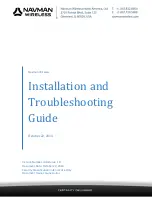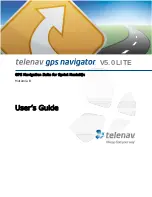
GV500VC User Manual
TRACGV500VCUM001
- 16 -
2) OBD Power Voltage
3) Parameter identification (PID)
4) Revolutions per minute of the engine (RPM)
5) Vehicle speed
6) Engine Coolant Temperature
7) Fuel Consumption
8) Distance Statistics
9) Malfunction Indicator Lamp (MIL)
10) Diagnostic Trouble Codes (DTC)
11) Throttle Position
12) Engine Load
13) Fuel Level Input
Note:
1 - The VIN is the unique identifier of Vehicle. Please note that not all Vehicle support getting the
VIN from OBD II system, because the Vehicle manufacturers are responsible for defining the data
return from OBD II system.
2 - Distance Statistics: GV500VC could get the distance in two cases: distance accumulated since
MIL is activated and distance accumulated since DTCs were cleared.
RF Exposure Statement:
For the product,under normal use condition is at least 20cm away from the body of the user
the user must keeping at least 20cm distance to the product.
This device complies with Part 15 of the FCC Rules. Its operation is subject to the following
Two conditions:
(1) This device may not cause harmful interference, and
(2) This device must accept any interference received, including interference that may cause
undesired operation.
Note:
THE GRANTEE IS NOT RESPONSIBLE FOR ANY CHANGES OR MODIFICATIONS NOT EXPRESSLY
APPROVED BY THE PARTY RESPONSIBLE FOR COMPLIANCE. SUCH MODIFICATIONS COULD
VOID THE USER’S AUTHORITY TO OPERATE THE EQUIPMENT
This product has been tested and found to comply with the limits for Part 15 of the FCC
Rules.
These limits are designed to provide reasonable protection against harmful interference in a
residential installation. This product generates, uses, and can radiate radio frequency energy
and,if not installed and used in accordance with the instructions, may cause harmful interfer
ence toradio communications. However, there is no guarantee that interference will not occ
ur in aparticular installation. If this product does cause harmful interference to radio or telev
isionreception, which can be determined by turning the equipment off and on, the user is en
couraged to try to correct the interference by one or more of the following measures:
—
Reorient or relocate the receiving antenna.


































